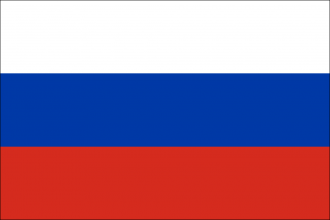Russia is a member of the G8 and the UN Security Council, and as a consequence its ‘weight’ in economic and political developments at the global level, is quite significant.
As a vast, quite diverse and rich in natural resources and scientific achievements country, following the turbulent times of political and economic transition in the 1990s, Russia experienced more than a decade of economic growth (over the period 2000-2013, with the exception of the period 2009-2010 – see following figure), driven to a large extent by a boom in consumer commodities and high oil prices. By consequence, poverty levels dropped significantly and a sizable middle class was established.
It must not be underestimated that during this period, Russia performed a small economic marvel, since when Vladimir Putin became President in early 2000, Russia was effectively bankrupt, given it owed more money to the IMF (International Monetary Fund), than it had in reserves of foreign currency. As a result, Russia went on to become one of the largest creditors of US debt worldwide. In the meanwhile, its GDP increased by a factor of about 11 (from 0.2 in 1999, to 2.23 Trillion USD in 2012).
Over the period 2011-2014, however, the pace of the economic growth slowed down dramatically, while in 2015, it was reversed (see the figure above), due to the low oil prices and the EU/US sanctions imposed on Russia, as of 2014. The country thus currently finds itself in a period of economic stagnation and will have to face ‘key’ economic challenges in order to get the economy back on track and establish solid foundations for its future sustainable growth. On the one hand, productivity levels will need to be increased (both at the country and corporate levels), while on the other, economic activities will need to be further diversified, to minimise dependence on hydrocarbon resources. It is indicative that according to the European Parliament Research Service, in 2013, 68% of Russia’s exports were attributable to oil and gas products; more specifically, 21% was associated with petroleum products, 33% with crude oil and 14% with natural gas.
Nevertheless, in the mist of the global economic crisis, in 2009, the Ministry of Economic Trade and Development issued a highly ambitious plan, setting the economic targets for the year 2020. If these goals were to be met, Russia would be the largest economy within Europe and the 5th largest worldwide, trailing only the United States, China, Japan, and India.
Such ambitious plans can be justified, given Russia is estimated to contain in its territory, over 20% of all the natural resources in the world. Its undersoil value, has been estimated by the World Bank as some 75.7 Trillion US $, placing it 1st across the globe. Notably, it is the world's largest producer and exporter of natural gas, and further is currently (2016) competing with the Kingdom of Saudi Arabia for being the world's top oil producer. The country further has rich deposits of metals/metal ores, including of uranium, iron, manganese, chromium, nickel, platinum, titanium, aluminium, copper, tin, lead, tungsten, gold and silver. In fact, since 2005, Russia is considered the world's wealthiest country in terms of gold reserves. In addition, coal, phosphates, diamonds, salt and amber are mined in various parts of the country, while its vast timber reserves, have resulted in Russia leading the global wood market.
Russia’s trade balance has consistently exhibited a surplus, at least for the last 15 years. Nevertheless, the year-on-year results, have fluctuated quite significantly, particularly since the beginning of the global economic crisis (see following figure). So, although the trade balance for 2015 is more than double that of 2000 (i.e. 111.64 Billion US $ vs. 52.05 Billion US $), only in 2013, the trade balance was some 40% less than that of 2000 (specifically 32.17 Million US $). This can be explained to a large degree as discussed in previous, due to the heavy dependence of Russian exports on hydrocarbon products.
One of the most prominent trading partners of Russia, is the European Union (EU). Specifically, the EU is the largest trading partner of Russia, whilst for the EU, Russia is its 3rd largest trading partner. Trade between the two parties exhibited large growth until 2008, when the global economic crisis began. As of 2010, the growth in trade between the EU and Russia resumed, reaching record levels in 2012. Characteristically, the EU imports from Russia, mostly raw materials, predominantly oil (whether crude or refined) and gas. On the other hand, Russia imports from the EU, mostly machinery, transport equipment, chemicals, medicine and agricultural products. Furthermore, the EU is by far the largest foreign investor in the country, with up to 75% of Foreign Direct Investment (FDI) in 2014, originating from EU Member States.
Further, the country’s unemployment rate as officially reported to the World Bank on an annual basis, has demonstrated a steady improvement, since the year 1998 when it peaked at 13.3%. With the exception of the year 2009 when it spiked at 8.3%, the unemployment rate has continued to drop, reaching a very encouraging 5.2% in 2014 (see figure above). In contrast, for most of the country’s political and economic transition period (i.e. between 1992 and 1998), the unemployment rate steadily rose.

